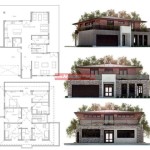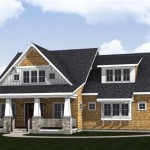Duck House Plans and Instructions: A Comprehensive Guide
Building a duck house provides a safe and comfortable environment for ducks, protecting them from predators and harsh weather. Proper planning and construction are crucial for a successful duck house project. This guide offers a comprehensive overview of duck house plans and instructions, covering essential aspects from design considerations to construction techniques.
Planning the Duck House
Before beginning construction, careful planning is essential. Several factors should be considered, including the number of ducks, available space, and local climate. The size of the duck house should be appropriate for the number of ducks it will house, allowing adequate space for movement and nesting. Overcrowding can lead to stress, disease, and reduced egg production.
The location of the duck house within the property is also crucial. Selecting a slightly elevated, well-drained area can prevent flooding and moisture buildup. Proximity to a water source, such as a pond or stream, is beneficial for ducks, but the house itself should be positioned to avoid direct contact with water.
Essential Design Features
A functional duck house incorporates several key design features. A sloped roof facilitates water runoff and prevents leakage. Adequate ventilation is essential for maintaining a healthy environment within the house, preventing the buildup of ammonia and moisture. This can be achieved through vents or windows placed strategically to allow air circulation.
Easy access for cleaning is another important design consideration. A large door or removable roof panel allows for efficient cleaning and removal of bedding materials. Nesting boxes should be included in the design, providing ducks with private spaces for laying eggs. These boxes can be simple wooden structures, filled with clean straw or hay.
Choosing Materials
Durable and weather-resistant materials are essential for constructing a long-lasting duck house. Pressure-treated lumber is a popular choice for framing, offering resistance to rot and decay. Exterior-grade plywood can be used for siding and flooring, providing a sturdy and weatherproof surface. Avoid using materials treated with chemicals that could be harmful to the ducks.
Constructing the Duck House
Building the duck house typically begins with constructing the floor frame. This frame should be level and sturdy to support the weight of the house and its inhabitants. Once the floor frame is complete, the walls can be built, attaching them securely to the floor frame. The roof frame is then constructed, ensuring a proper slope for water drainage.
After the framing is complete, the siding and roofing materials can be installed. Ensure that all seams and joints are sealed properly to prevent drafts and leaks. Windows and vents should be installed to provide adequate ventilation. Finally, the nesting boxes can be built and placed within the duck house.
Duck House Bedding
Choosing the right bedding material is essential for maintaining a clean and comfortable environment for the ducks. Straw and pine shavings are popular choices, offering good absorbency and insulation. Avoid using cedar shavings, as they can be toxic to ducks. The bedding should be changed regularly to prevent the buildup of ammonia and maintain hygiene.
Predator Protection
Protecting ducks from predators is crucial for their safety. The duck house should be designed with predator protection in mind. Hardware cloth can be used to cover windows and vents, preventing entry by predators while still allowing for ventilation. Securing the duck house at night is also important. A strong latch or lock can prevent predators from entering the house.
Maintaining the Duck House
Regular maintenance is essential for keeping the duck house clean and functional. The bedding should be changed regularly, and the house should be cleaned thoroughly periodically. Inspect the house regularly for any signs of damage or wear and tear, and make repairs as needed. Maintaining a clean and well-maintained duck house contributes to the health and well-being of the ducks.
Adapting Plans to Specific Needs
Pre-made duck house plans can be adapted to suit specific needs and preferences. Modifications can be made to the size, layout, and features of the house to accommodate the number of ducks, available space, and desired aesthetics. Customization allows for the creation of a duck house that perfectly fits the individual's requirements.
Resources for Duck House Plans
Numerous resources are available for finding duck house plans. Online platforms, books, and magazines offer a variety of plans, ranging from simple designs to more elaborate structures. Selecting a plan that matches one's skill level and resources is essential for a successful project. Following detailed instructions and utilizing appropriate tools ensures a well-constructed and functional duck house.

Duck House Plans Howtospecialist How To Build Step By Diy

Duck Coop Plans Myoutdoorplans

An Ilrated Guide To Making A Wood Duck Box Field Stream House Plans Bird

Duck House Plans Howtospecialist How To Build Step By Diy

Duck Coop Plans Myoutdoorplans

Wood Duck House 70birds Birdhouse Plans Index

Wood Duck Nest Box House Ducks Plans

Scdnr Wood Duck Box Construction

Duck Coop Plans Myoutdoorplans

Duck House Nest Box Plans Howtospecialist How To Build Step By Diy








